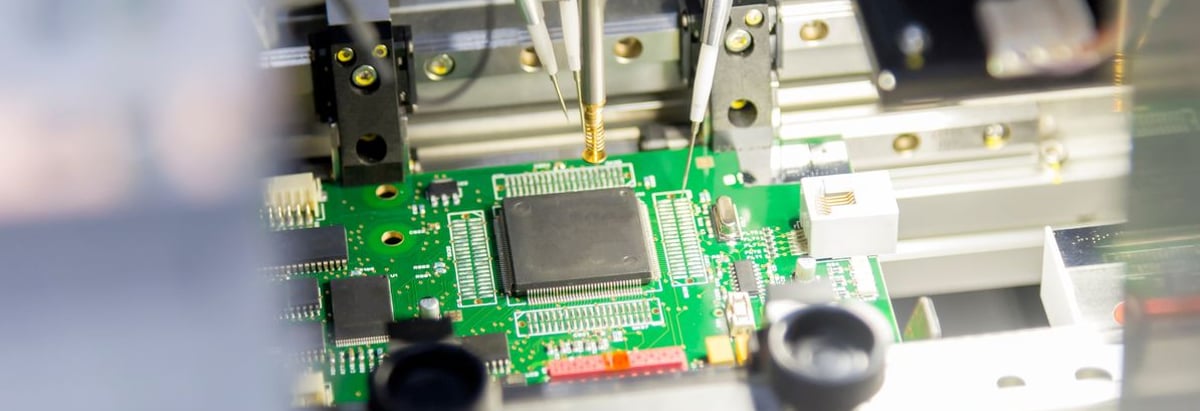Stock Analysis
- United States
- /
- Semiconductors
- /
- NasdaqGS:TER
These 4 Measures Indicate That Teradyne (NASDAQ:TER) Is Using Debt Reasonably Well

David Iben put it well when he said, 'Volatility is not a risk we care about. What we care about is avoiding the permanent loss of capital.' So it might be obvious that you need to consider debt, when you think about how risky any given stock is, because too much debt can sink a company. We note that Teradyne, Inc. (NASDAQ:TER) does have debt on its balance sheet. But should shareholders be worried about its use of debt?
When Is Debt A Problem?
Debt and other liabilities become risky for a business when it cannot easily fulfill those obligations, either with free cash flow or by raising capital at an attractive price. Part and parcel of capitalism is the process of 'creative destruction' where failed businesses are mercilessly liquidated by their bankers. While that is not too common, we often do see indebted companies permanently diluting shareholders because lenders force them to raise capital at a distressed price. Having said that, the most common situation is where a company manages its debt reasonably well - and to its own advantage. When we think about a company's use of debt, we first look at cash and debt together.
Check out our latest analysis for Teradyne
What Is Teradyne's Debt?
The image below, which you can click on for greater detail, shows that Teradyne had debt of US$23.5m at the end of October 2023, a reduction from US$64.8m over a year. However, its balance sheet shows it holds US$716.5m in cash, so it actually has US$693.0m net cash.
A Look At Teradyne's Liabilities
The latest balance sheet data shows that Teradyne had liabilities of US$640.7m due within a year, and liabilities of US$288.7m falling due after that. Offsetting these obligations, it had cash of US$716.5m as well as receivables valued at US$455.9m due within 12 months. So it can boast US$243.1m more liquid assets than total liabilities.
Having regard to Teradyne's size, it seems that its liquid assets are well balanced with its total liabilities. So while it's hard to imagine that the US$16.1b company is struggling for cash, we still think it's worth monitoring its balance sheet. Simply put, the fact that Teradyne has more cash than debt is arguably a good indication that it can manage its debt safely.
In fact Teradyne's saving grace is its low debt levels, because its EBIT has tanked 39% in the last twelve months. Falling earnings (if the trend continues) could eventually make even modest debt quite risky. The balance sheet is clearly the area to focus on when you are analysing debt. But ultimately the future profitability of the business will decide if Teradyne can strengthen its balance sheet over time. So if you want to see what the professionals think, you might find this free report on analyst profit forecasts to be interesting.
Finally, while the tax-man may adore accounting profits, lenders only accept cold hard cash. Teradyne may have net cash on the balance sheet, but it is still interesting to look at how well the business converts its earnings before interest and tax (EBIT) to free cash flow, because that will influence both its need for, and its capacity to manage debt. Over the most recent three years, Teradyne recorded free cash flow worth 68% of its EBIT, which is around normal, given free cash flow excludes interest and tax. This cold hard cash means it can reduce its debt when it wants to.
Summing Up
While we empathize with investors who find debt concerning, you should keep in mind that Teradyne has net cash of US$693.0m, as well as more liquid assets than liabilities. The cherry on top was that in converted 68% of that EBIT to free cash flow, bringing in US$370m. So we don't have any problem with Teradyne's use of debt. Over time, share prices tend to follow earnings per share, so if you're interested in Teradyne, you may well want to click here to check an interactive graph of its earnings per share history.
Of course, if you're the type of investor who prefers buying stocks without the burden of debt, then don't hesitate to discover our exclusive list of net cash growth stocks, today.
Valuation is complex, but we're here to simplify it.
Discover if Teradyne might be undervalued or overvalued with our detailed analysis, featuring fair value estimates, potential risks, dividends, insider trades, and its financial condition.
Access Free AnalysisHave feedback on this article? Concerned about the content? Get in touch with us directly. Alternatively, email editorial-team (at) simplywallst.com.
This article by Simply Wall St is general in nature. We provide commentary based on historical data and analyst forecasts only using an unbiased methodology and our articles are not intended to be financial advice. It does not constitute a recommendation to buy or sell any stock, and does not take account of your objectives, or your financial situation. We aim to bring you long-term focused analysis driven by fundamental data. Note that our analysis may not factor in the latest price-sensitive company announcements or qualitative material. Simply Wall St has no position in any stocks mentioned.
About NasdaqGS:TER
Teradyne
Designs, develops, manufactures, and sells automated test systems and robotics products worldwide.

